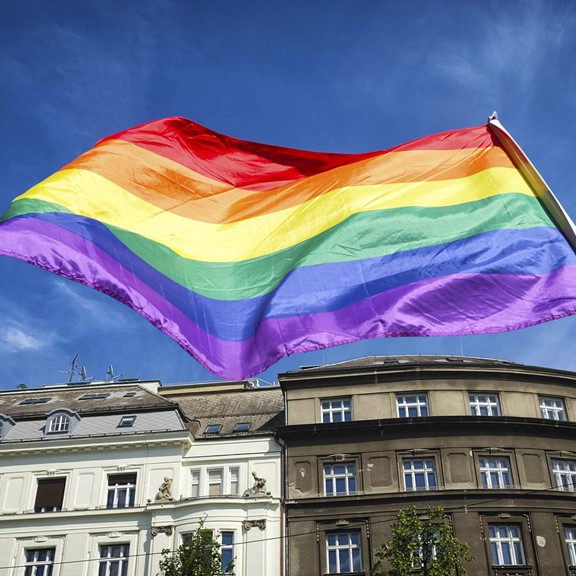Supporting LGBQT+ (Sexuality)
World Population Day (observed on 11th July) is an annual event which seeks to raise awareness of global population issues. The global population is projected to reach 8 billion this year. Based on gender, ethnicity, class, religion, sexual orientation, disability and origin, among other factors, too many are still exposed to discrimination, harassment and violence. We need to continue investing in human and physical capital for inclusive, productive societies that uphold human rights. In a world of 8 billion, there must always be space for possibility (World Population Day | United Nations).
An individual’s sexual orientation and gender identity should not affect whether they get a job, benefit from development opportunities or receive a promotion. Everyone deserves the opportunity to develop their skills, be fairly rewarded and use their voice in a safe and inclusive working environment (Inclusion at work: perspectives on LGBT+ working lives | CIPD). This research was conducted by the Chartered Institute of Personel Development (CIPD) and their key findings were as follows:
- Heightened workplace conflict – 40% of LGB+ workers and 55% of trans workers have experienced conflict, compared with 29% of heterosexual, cisgender employees. When conflicts occurred, many reported the issue hadn’t been fully resolved.
- Job dissatisfaction and psychological safety – while 85% of heterosexual employees reported good working relationships, this dropped to 80% for LGB+ and 75% for trans workers. Job dissatisfaction rose from 15% for heterosexual workers to 19% for LGB+ and 33% for trans workers. In addition, a higher proportion of LGB+ workers (16%) feel psychologically unsafe in the workplace compared with heterosexual workers (10%), while for trans workers, this figure is even higher at 18%.
- Negative impact on health – CIPD Good Work Index identified a decline in workers reporting their job has a positive impact on their health in recent years. LGB+ (35%) and trans employees (26%) are slightly less likely to say work has a positive impact on their health than heterosexual workers (38%).
- Trans policies and practices need targeted improvements – when asked about the adequacy of various trans-specific policies and practices in their organisation, almost half of those trans-workers surveyed deemed the following areas to be inadequate - diversity training that includes gender identity, trans-inclusive language in corporate/marketing communications and guidance for managers on how to support trans workers.

Taking steps to improve inclusion in the workplace
Achieving equality in your recruitment process for LGBTQ+ talent starts with taking the steps to support existing employees and improve inclusion efforts within the workplace (10 Ways To Ensure Your Recruitment Process Is LGBTQ-Friendly - recruitics.com). The ten actions are as follows:
- Show your pride – by acknowledging Pride Month (June) in social media or other forms of external communication, providing LGBTQ+ employees with a platform to share their employee experience with your organisation, or even participating as a company in pride events or parades.
- Support LGBTQ+ causes, charities or community centres - this can present a great opportunity to increase brand recognition amongst LGBTQ+ talent and get employees involved in team-building volunteer work, which has proven effective in increasing both job satisfaction and employee retention.
- Add information on inclusivity in your mission statement and website - communicating your stance on inclusivity on your website and in your mission statement will guarantee that candidates can easily walk away with that knowledge, regardless of where they look.
- Use gender neutral language - check job descriptions, employment applications, and other recruitment marketing copy, using “they” or the second-person “you” would be more inclusive of candidates who are non-binary or gender nonconforming. Using tools like Gender Decoder(Gender Decoder: find subtle bias in job ads (katmatfield.com) can help you identify issues with word choice and language.
- Search for LGBTQ+ talent - expand existing networks, start locally by searching for community organisations that have job boards or career events, and consider reaching out to universities and colleges in the area with LGBTQ+ centres and/or student groups. You can also post your vacancies on LGBTQ+ job boards like Pink Jobs or UK Official Diversity LGBT Recruitment Job Board and promote opportunities in social media groups dedicated to LGBTQ+ employment.
- Provide LGBTQ+ competency training - provide employees with appropriate Diversity Equity and Inclusion (DE&I) training that specifically addresses gender identity and sexual orientation.
- Ensure policies are comprehensive and transparent - expand your policies to include language about prohibiting discrimination based on sexual orientation and gender identity. Examine the benefits that you offer to make sure that you’re providing equal coverage for all employees, such as medical benefits for transgender workers and life insurance policies that cover same-gender partnerships.
- Develop a plan for supporting transgender employees - formalise a process for how an employee’s transition, name change, and pronouns will be handled and communicated, but make sure you’re planning to respect their privacy and talk the plan over with them.
- Conduct and tailor candidate feedback surveys – when surveying your candidates, consider asking targeted questions about any experience they may have had throughout your recruitment process that made them feel marginalised or “othered” based on any protected characteristic, including sexual orientation and gender identity or expression.
- Conduct LGBTQ+ inclusive employee surveys - surveying your current employees can help identify areas for improvement especially in Diversity Equity and Inclusion. Allow employees to remain anonymous and ask them if they have felt supported regardless of their gender identity and sexual orientation. Provide space to share any experiences of bias or discrimination they may have had and ask for suggestions on ways to make your workplace more inclusive for diverse communities.
Lizzy Turek
Client Research Associate


